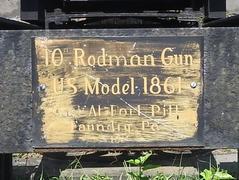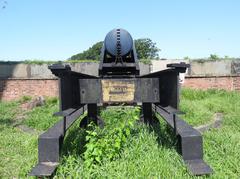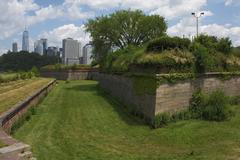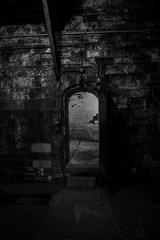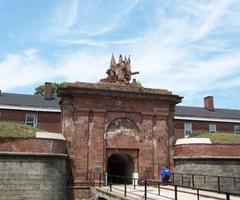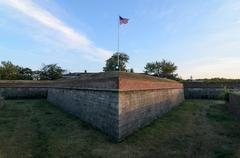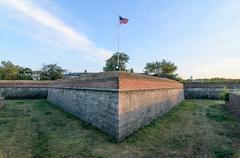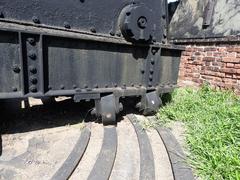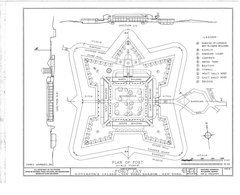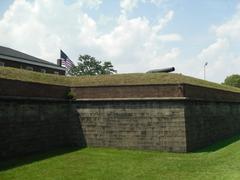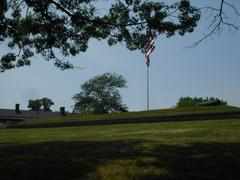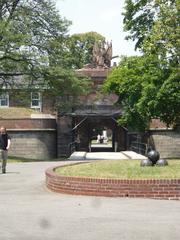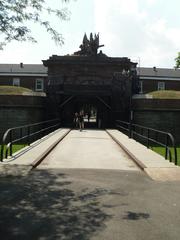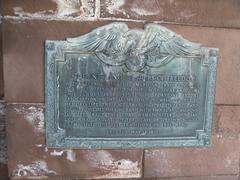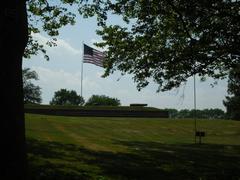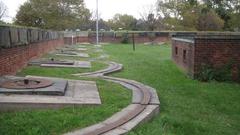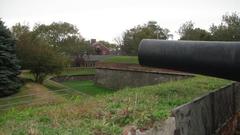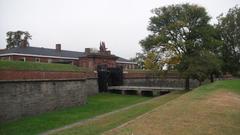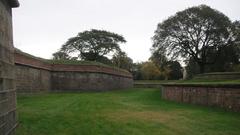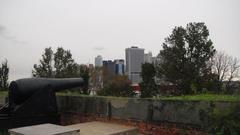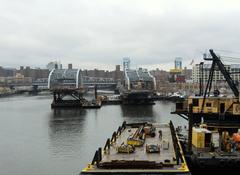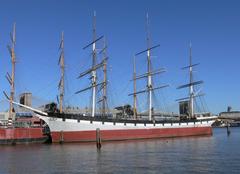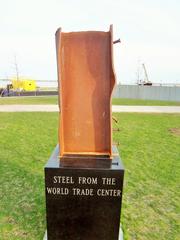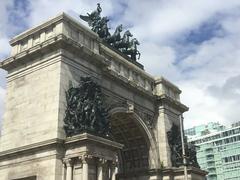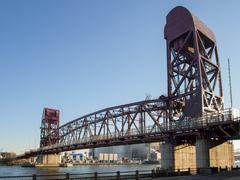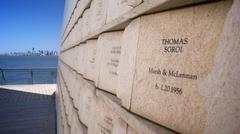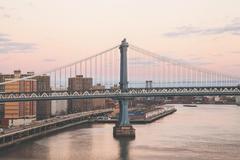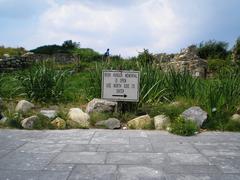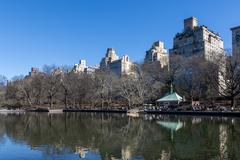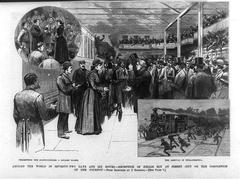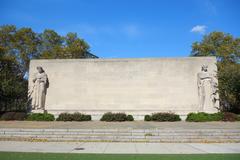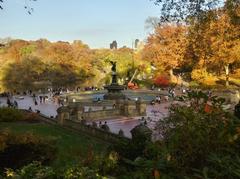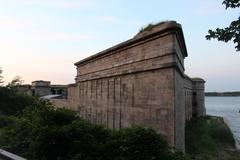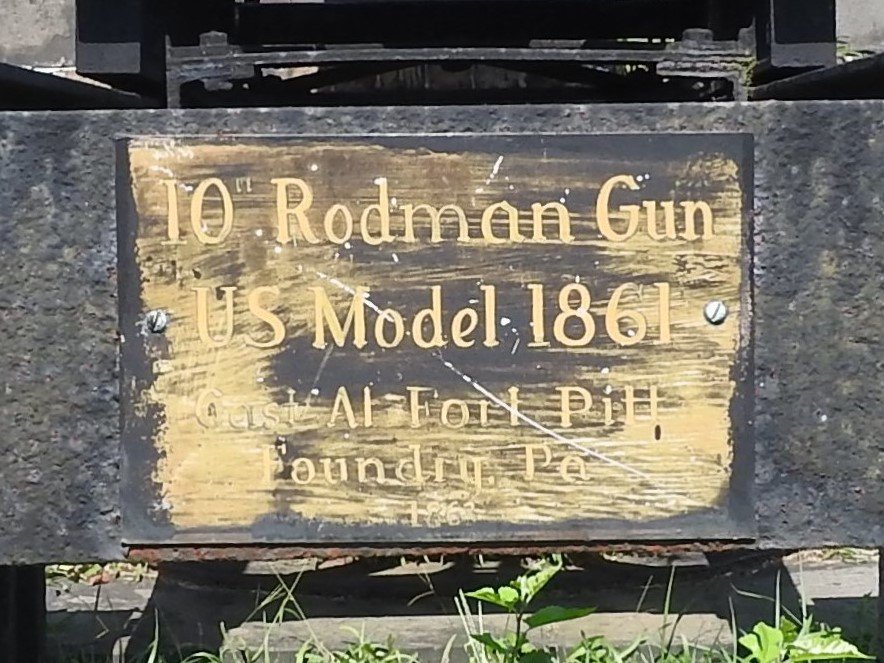
Fort Jay Visiting Hours, Tickets, and Travel Tips in New York City
Date: 18/08/2024
Introduction
Fort Jay, situated on Governors Island in New York Harbor, is a remarkable historical site that offers a rich tapestry of American military history. Originally constructed in 1794 as part of the First American System of Coastal Fortifications, the fort played a pivotal role in defending New York City from naval attacks. Over its long history, Fort Jay has served various military functions, from a strategic defense point during the War of 1812 to a recruitment and training center during the Civil War. Today, it stands as a preserved landmark under the National Park Service, providing visitors with a unique glimpse into the past (source). This guide will provide comprehensive information on visiting Fort Jay, including its historical significance, visiting hours, ticket information, and travel tips, ensuring you have an enriching and memorable experience.
Table of Contents
- Introduction
- Early Construction and Purpose
- Renaming and Military Significance
- Reconstruction and Strategic Importance
- Role in Major Conflicts
- Post-Civil War Era and Army Headquarters
- Transition to Public Use
- Establishment of the National Monument
- Modern-Day Fort Jay
- Visitor Information
- FAQ
- Conclusion
Explore Fort Jay: Visiting Hours, Tickets, and Historical Insights
Early Construction and Purpose
Fort Jay, located on Governors Island in New York Harbor, was initially constructed in 1794 as a coastal bastion fort. Its primary purpose was to defend Upper New York Bay from potential naval attacks. The fort was part of the First American System of Coastal Fortifications, a series of defensive structures built along the U.S. coastline to protect against foreign invasions (source).
Renaming and Military Significance
From 1806 to 1904, Fort Jay was known as Fort Columbus, named presumably after the explorer Christopher Columbus. During this period, it played a crucial role in the military life of New York City. As the largest army post defending the city, Fort Columbus, along with other nearby fortifications, provided a robust defense system for New York Harbor. This network of coastal defenses is credited with deterring the British from launching naval attacks on the city during the War of 1812. Instead, the British focused their efforts on less fortified areas such as the Great Lakes, the Chesapeake Bay, and the Gulf of Mexico (source).
Reconstruction and Strategic Importance
Between 1806 and 1809, Fort Jay underwent significant reconstruction. The fort was strategically positioned on the highest point of Governors Island, with its surrounding open space, or glacis, sloping down to the waterfront on all sides. This elevated position provided a commanding view of the harbor, making it an ideal location for a defensive fortification. Alongside Castle Williams, which was constructed between 1807 and 1811, Fort Jay formed a critical part of the Second American System of Coastal Fortifications (source).
Role in Major Conflicts
Fort Jay played important roles in several major conflicts, including the War of 1812, the Civil War, and both World Wars. During the War of 1812, the fort’s presence helped to protect New York City from British naval attacks. In the Civil War, Fort Jay served as a recruitment and training center for Union soldiers. During World Wars I and II, the fort was used for various military purposes, including as a command center and a training facility (source).
Post-Civil War Era and Army Headquarters
By the 1830s, the protective functions of Fort Jay and Castle Williams had diminished, but the core of a small urban Army post evolved around them. By the 1870s, with significant reductions in the post-Civil War army, Fort Jay became a major headquarters for the U.S. Army. This role continued until the Army’s departure from Governors Island in 1966. The residential and institutional structures surrounding the two fortifications are now part of the Governors Island National Historic Landmark District, which contains over 60 structures related to two centuries of military history (source).
Transition to Public Use
In October 1995, the United States Coast Guard announced the closure of its largest base on Governors Island as a cost-saving measure. The Coast Guard had established the base on the island in 1966 after the U.S. Army closed Fort Jay. This closure marked the end of nearly 200 years of military presence on the island (source).
Establishment of the National Monument
As President Clinton left office in January 2001, he established the Governors Island National Monument by Presidential Proclamation 7402. This proclamation aimed to preserve the historic fortifications of Fort Jay and Castle Williams. Although the proclamation initially contained technical errors, it was not revoked or invalidated. On January 31, 2003, the island was conveyed to the National Trust for Historic Preservation, which then transferred 22 acres to the U.S. Department of the Interior for use as a national monument. The remaining 150 acres were conveyed to the Governors Island Preservation and Education Corporation, now known as The Trust for Governors Island, for redevelopment and public use (source).
Modern-Day Fort Jay
Today, Fort Jay is open to the public on a seasonal basis as part of the Governors Island National Monument. The fort and the island offer a unique blend of historical significance and modern recreational opportunities. Visitors can explore the fort’s historic structures, enjoy panoramic views of New York Harbor, and participate in various cultural and recreational activities. The island’s transformation from a military outpost to a vibrant public space highlights its enduring importance in the history and development of New York City (source).
Visitor Information
Visiting Hours and Tickets
Fort Jay is typically open from late spring to early fall. Specific hours for tours and self-guided visits can vary, so it’s recommended to check the latest information on the official Governors Island National Monument website. Admission to Fort Jay is free, but some special events or guided tours may require tickets. Be sure to secure your tickets in advance if needed (source).
Special Events and Guided Tours
Throughout the year, Fort Jay hosts various special events, including historical reenactments, educational programs, and cultural festivals. Guided tours are available and provide in-depth insights into the fort’s history and its role in American history. These tours are an excellent way to enrich your visit and learn more about this significant site (source).
Accessibility and Travel Tips
Fort Jay is accessible to visitors with disabilities, with ramps and pathways ensuring ease of movement. To reach Governors Island, visitors can take a short ferry ride from Manhattan or Brooklyn. Once on the island, you can enjoy a variety of activities, including picnicking, biking, and exploring other historic sites like Castle Williams. It’s advisable to wear comfortable shoes and bring water, especially during the warmer months (source).
Nearby Attractions
Governors Island offers more than just Fort Jay. Visitors can explore other notable attractions such as Castle Williams, the Liggett Hall, and the island’s beautiful park areas. Additionally, the island hosts art installations, food vendors, and seasonal events, making it a vibrant destination for all types of visitors (source).
FAQ
Q: When is Fort Jay open? A: Fort Jay is typically open from late spring to early fall. Check the official website for specific dates and hours.
Q: How can I get tickets for Fort Jay? A: Admission to Fort Jay is free, but some special events and guided tours may require tickets. Check the official website for ticket information.
Q: How do I get to Governors Island? A: You can reach Governors Island via a short ferry ride from Manhattan or Brooklyn.
Q: Is Fort Jay accessible for visitors with disabilities? A: Yes, Fort Jay is accessible, with ramps and pathways to ensure ease of movement for all visitors.
Conclusion
Fort Jay’s rich history and strategic importance make it a fascinating destination for history enthusiasts and casual visitors alike. Its transformation from a critical military fortification to a public historical site underscores the dynamic history of New York City and its harbor. Whether you’re interested in military history, architecture, or simply looking for a unique urban escape, Fort Jay on Governors Island offers a memorable experience for all visitors (source).
Call to Action
Plan your visit to Fort Jay today and explore the rich history and vibrant recreational opportunities that Governors Island has to offer. Don’t forget to check out our other articles for more information on New York’s historical sites and follow us on social media for the latest updates.
References
- Fort Jay. (n.d.). SpottingHistory. Retrieved August 18, 2024, from source
- Governors Island National Monument. (n.d.). Wikipedia. Retrieved August 18, 2024, from source
- Governors Island National Monument. (n.d.). National Park Service. Retrieved August 18, 2024, from source
- Governors Island. (n.d.). Retrieved August 18, 2024, from source
- NPPlan. (n.d.). Retrieved August 18, 2024, from source
- Stanton House Inn. (n.d.). Retrieved August 18, 2024, from source
- Fort Jay. (n.d.). Wikipedia. Retrieved August 18, 2024, from source
- Governors Island National Monument. (n.d.). Curbed. Retrieved August 18, 2024, from source
